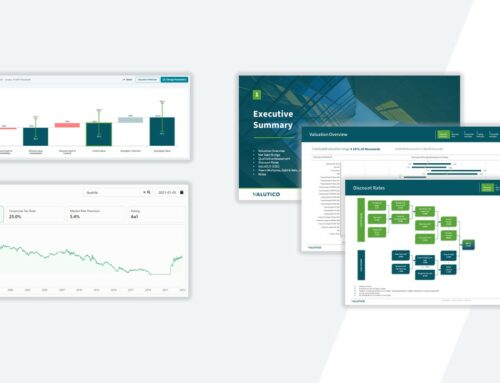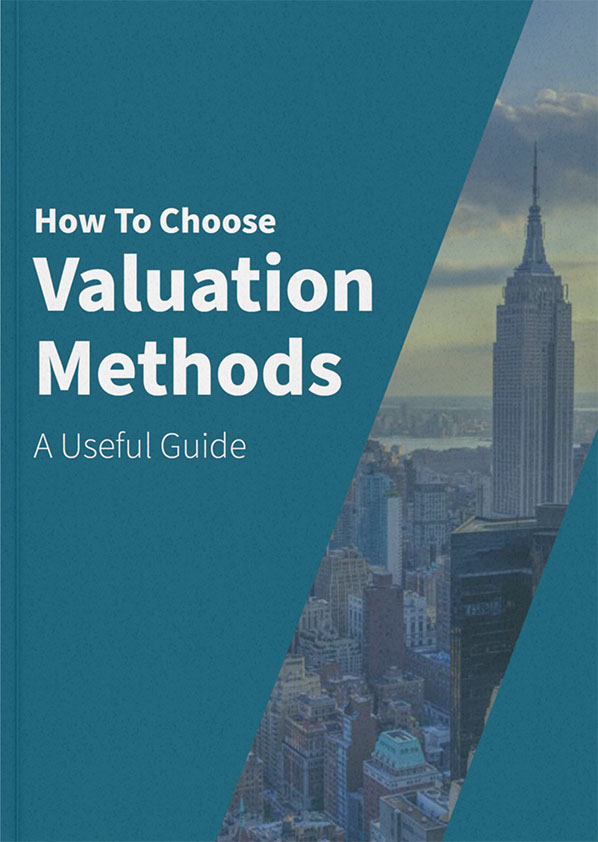The Impact of COVID-19 on Valuations
Monthly Blogpost — Valutico | January 2022
The Covid-19 pandemic has affected the financial world in many ways. We have received many questions from our clients and partners on this topic in recent months. This area is clearly one with many challenges for management teams, investors, regulators and other users of valuations. As valuation experts, we would therefore like to share with you our views on the impact of the pandemic on business valuations in general.
How has the pandemic affected business valuations?
At the outset, it is important to understand that established valuation methodologies such as DCF and trading multiple valuations still apply in these exceptional circumstances. Nevertheless, the data used in the valuation should be carefully considered and adjusted where necessary. Forecasts should reflect the increased uncertainty and different scenarios should be evaluated to understand the variance in potential outcomes. For this, it is essential to define a purpose for the valuation and to estimate how much the volatility should influence the valuation.
COVID-19 created a high degree of uncertainty in many aspects of business and daily life, which generally means a higher discount rate is required in a DCF analysis. If the application of the CAPM shows that the discount rate has decreased since the end of 2019, it may be necessary to review carefully and adjust the market parameters if necessary. We expect to see far greater use of scenario and sensitivity analysis to take account of uncertainty and the many business impacts of the pandemic. Concluded valuation ranges should thus also be wider than normal and may fluctuate as the estimates are updated over time. It is important that this is clearly communicated to those who depend on the outcomes. For estimates presented by analysts, there is a need for more disclosure and a clear disclaimer that estimates can change quickly over a relatively short period of time.
Although some governments have recently started to ease lockdown restrictions, it is still unclear when there will be a return to normality and it is therefore difficult to say with certainty what a company’s performance will be. Each company is very different and valuations need to be realistic and cautious.
Prior to the pandemic, the value of a company was determined primarily by its earnings potential. A company’s value could be determined by examining historical trading and sales data and deriving a multiplier that could be applied to the company’s realizable profits, taking into account current trends and the company’s future plans.
To assess the impact of a pandemic, a deeper dive into the business operations may be required. To understand the immediate impact of the pandemic on the business, the validity of the assumptions on which the projections are based must be evaluated, taking into account current management reports and forecasts, as well as discussions with owners. In reviewing this information, the estimator should consider, among other things, recent sales and profits, supply chain problems, contract cancellations, layoffs, late payments and customer demand.
Challenge your assumptions
At this point, all assumptions and information in the valuation should be challenged. Do management’s projections reasonably reflect the outcome of recent events and are cash flows adjusted accordingly? We could even go as far as challenging the company’s ability to continue trading on a going concern basis, especially if it is highly geared with tight cashflow. If the company has short-term liquidity problems, there is a risk that the company may experience financial difficulties. Ask yourself: is this consistent with ordinary trading conditions or are additional premia to discount rates warranted? If a company (e.g., in aviation) accumulates a large amount of deferred revenue and bookings decline, will it lack working capital? If the market for buying and selling assets is stagnant, it may be necessary to adjust the discount rate to reflect illiquidity.
EBITDAC — a serious indicator or just window dressing?
In 2020 a term emerged, “EBITDAC”, meaning earnings before interest, taxes, depreciation, amortisation and coronavirus.
As a general rule, it is difficult to objectively quantify the effects of the coronavirus, which are generally very industry- and company-specific. It is true that the use of a performance indicator adjusted for extraordinary effects can certainly be useful in establishing comparability of the earnings situation with previous years. However, due to the very limited traceability and auditability, the use of EBITDAC is viewed quite critically. In many cases, it will not be possible to directly assess the extent to which the pandemic actually had an impact on the accounting data. For example, declining sales, underutilized property, plant and equipment or extensive restructuring and reorganization measures could often be due to influences other than, or perhaps indirectly attributable to, the pandemic.
However, even seemingly «simple» matters such as bad debts need not be exclusively attributable to the pandemic in many cases. In addition, positive effects must also be taken into account when determining EBITDAC, e.g. savings from short-time working allowances, government aid (rescue package, etc.) and sales increases in individual sectors (e.g. online retail). It can therefore be stated that the statutory disclosure requirements in the notes to the financial statements and management reports are often likely to be sufficient to present the effects of the pandemic clearly and comprehensively. It seems questionable to try to improve clarity and comprehensiveness by additionally presenting an EBITDAC figure.
Conclusion
Ultimately, the valuation of a business is based on a simple question: How much would a buyer be willing to pay the seller for the business? Businesses are sold during pandemics and sold after pandemics. Although the subjectivity of the valuation process has increased significantly due to the current global situation, these processes will continue and it therefore becomes even more critical to ensure you have the right tools at your disposal when dealing with these issues.





